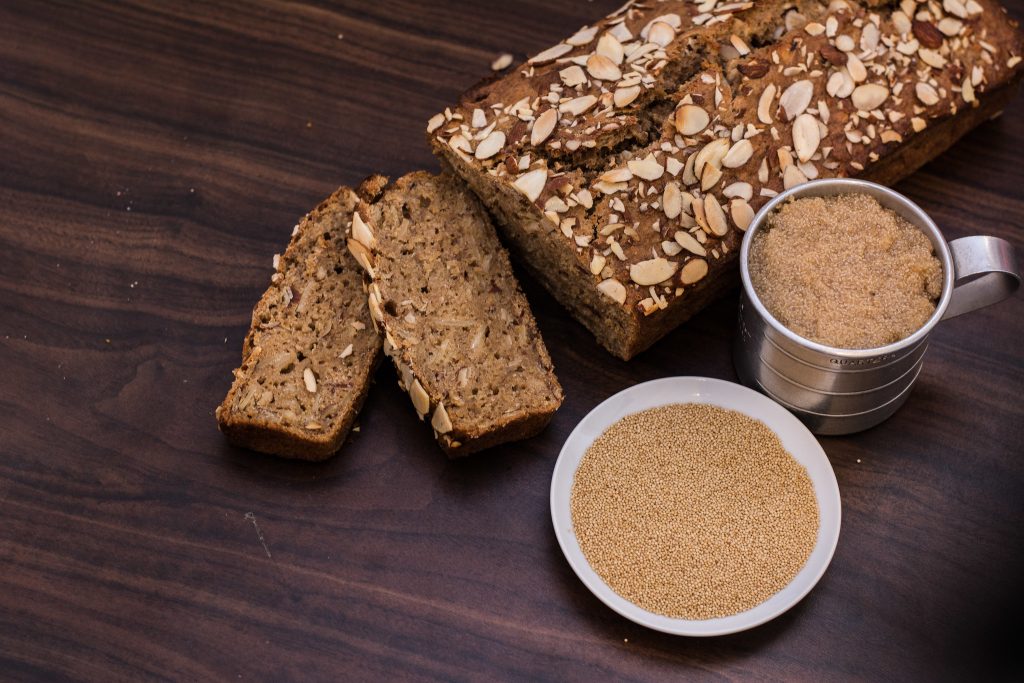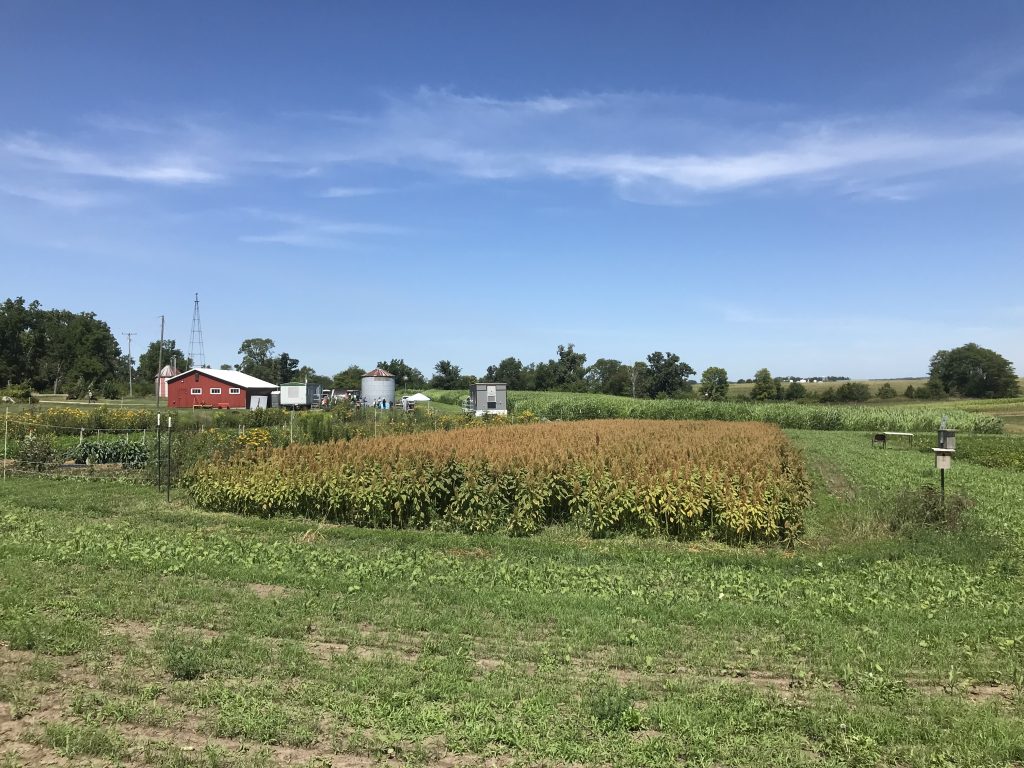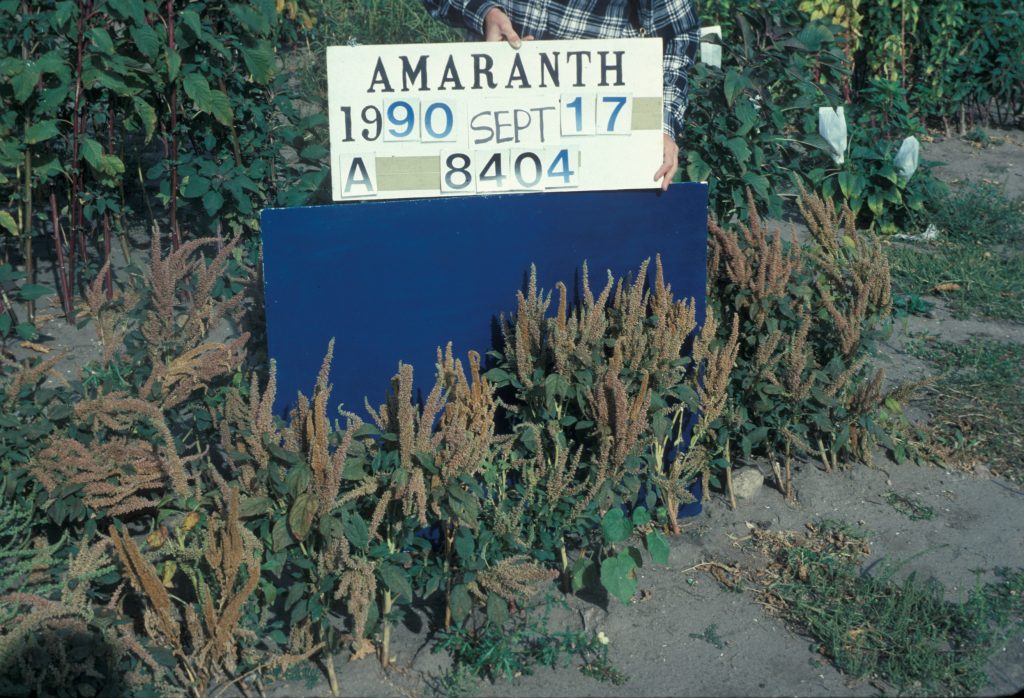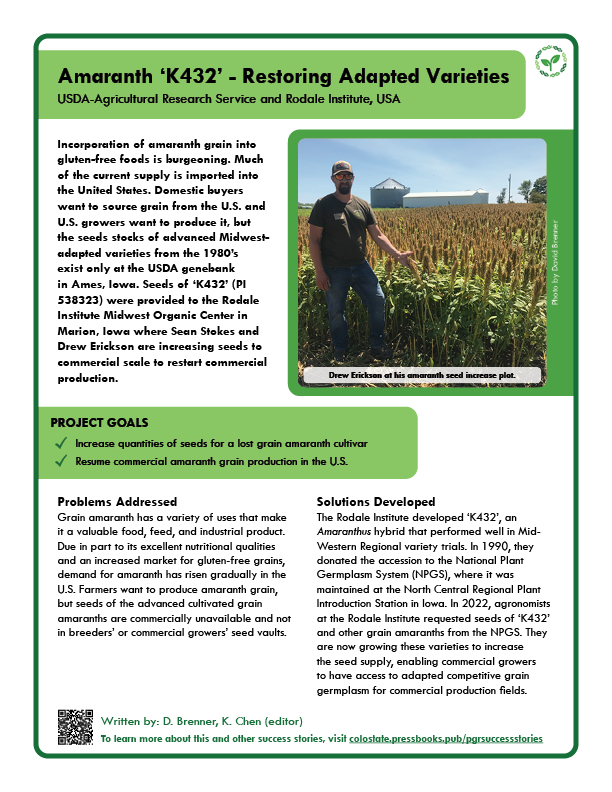Cereals and Pseudocereals
Amaranth ‘K432’ – Restoring Adapted Varieties
SEEDS FOR RESTORING AMARANTH GRAIN FARMING IN THE UNITED STATES
David M. Brenner
Corresponding author: dbrenner@iastate.edu
OUTLINE
1. SUMMARY

Incorporation of amaranth grain into gluten-free foods is burgeoning. Much of the current supply is imported into the United States. Domestic buyers want to source grain from the U.S. and U.S. growers want to produce it, but the seeds stocks of advanced Midwest-adapted varieties from the 1980’s exist only at the genebank in Ames, Iowa. Seeds of ‘K432’ (PI 538323) were provided to the Rodale Institute Midwest Organic Center in Marion, Iowa where Sean Stokes and Drew Erickson are increasing seeds to commercial scale to restart commercial production.
The goal was to produce sufficient quantities of seeds for a lost grain amaranth cultivar to resume commercial amaranth grain production in the United States.
Download a printable fact sheet by clicking the image below.
2. PROBLEMS ADDRESSED

Grain amaranth has a variety of uses that make it a valuable food, feed, and industrial product. Due in part to its excellent nutritional qualities and an increased market for gluten-free grains, demand for amaranth has risen gradually in the U.S. Farmers want to produce amaranth grain, but seeds of the advanced cultivated grain amaranths are commercially unavailable and not in breeders’ or commercial growers’ seed vaults.
3. SOLUTIONS DEVELOPED

‘K432’, an Amaranthus hybrid developed by the Rodale Institute in Kutztown, Pennsylvania, was donated to the National Plant Germplasm System (NPGS) in 1990. The NPGS maintained this accession at the North Central Regional Plant Introduction Station in Ames, Iowa. ‘K432’ is an advanced plant breeding product that performed well in Mid-Western Regional variety trials in the 1990s (Myers, 1994). In 2022, agronomists at the Rodale Institute requested seeds of ‘K432’ and other grain amaranths from the NPGS. The Rodale Institute is now growing these amaranth varieties in order to increase the seed supply, enabling commercial growers to have access to adapted competitive grain germplasm for commercial production fields.
Collaborators involved in developing solution:
- Sean Stokes and Drew Erickson, Rodale Institute Midwest Organic Center at Eztel Sugar Grove Farm, Marion, Iowa
- USDA-ARS North Central Regional Plant Introduction Station, Ames, Iowa
4. GERMPLASM

‘K432’ (PI 538323) is a semidwarf variety, less prone to lodging as compared to taller varieties. It matures early and produces very high grain yield. It is safeguarded by the USDA-ARS North Central Regional Plant Introduction Station—part of the National Plant Germplasm System.
5. REFERENCES
Myers RL. 1994. Regional amaranth variety test. Legacy 7:5-8.
6. CHAPTER INFORMATION
Citation: Brenner DM. 2024. Amaranth ‘K432’ – Restoring Adapted Varieties. In: Volk GM, Chen K, Byrne P (Eds.) Plant Genetic Resources: Success Stories. Fort Collins, Colorado: Colorado State University. Date accessed. Available from https://colostate.pressbooks.pub/pgrsuccessstories/chapter/amaranth-k432-restoring-adapted-varieties/
Content originally submitted: September 11, 2024
Date of publication: December 9, 2024
USDA is an equal opportunity provider, employer, and lender. Mention of trade names or commercial products in this article is solely for the purpose of providing specific information and does not imply recommendation or endorsement by the U.S. Department of Agriculture.


